June 13-14, 2019, Sri Aurobindo Society
SAFIC team recently conducted two-day intense discussions with selected representatives from four Auro schools (Chandigarh, Patiala and Jodhpur and Bengaluru) on the theme: Incorporating Topics and Insights from Indian Culture into Curriculum. This interaction was part of a programme organised by Shri Pradeep Narang, Chairman, Sri Aurobindo Society.
Representatives from Auro Schools:
Sri Aurobindo School of Integral Education, Chandigarh
- Mr. Arvind Mehan, Chairman, Sri Aurobindo Society Chandigarh Branch
- Ms. Garima S Bhardwaj, Principal
Sri Aurobindo International School, Patiala
- Neerja Sethi, Principal,
- Ms. Mukta, Vice-Chairperson, SAS Patiala
Auro Mirra International School, Ulsoor, Bengaluru
- Ms. Uma Mohan, Principal
Sri Aurobindo Centre of New Education, Jodhpur
- Mrs. Meera Singh, Chairperson, SAS Jodhpur Branch
- Dr. Alka Tanvi, Head of Sanskrit Department
- Mr. Sisir Kumar Patra, Co-ordinator
SAFIC Team
- Dr. Sampadananda Mishra, Director
- Dr. Beloo Mehra, Senior Associate
- Dr. Pranjal Garg, Resource Person (Ancient Indian History)
- Ms. Rajkumari, Sanskrit teacher
- Ms. Upasika Ghosh, Research Assistant
Day 1
The discussions began on Thursday, June 13, with a concentration with Mother’s music.
After the brief self-introductions by all the participants, Shri Pradeep Narang addressed the group and set the agenda for the next two days. In his brief remarks, Shri Narang spoke about the need for incorporating in a systematic way teaching-learning of Sanskrit language and other important aspects of Indian culture in an age-appropriate manner in schools all across the country, and particularly in schools inspired by the integral vision of Sri Aurobindo and the Mother. He also mentioned that over the years SAFIC has researched and designed valuable learning materials and pedagogical approaches which can be very helpful for schools as they work toward giving their students a greater exposure to Indian culture.
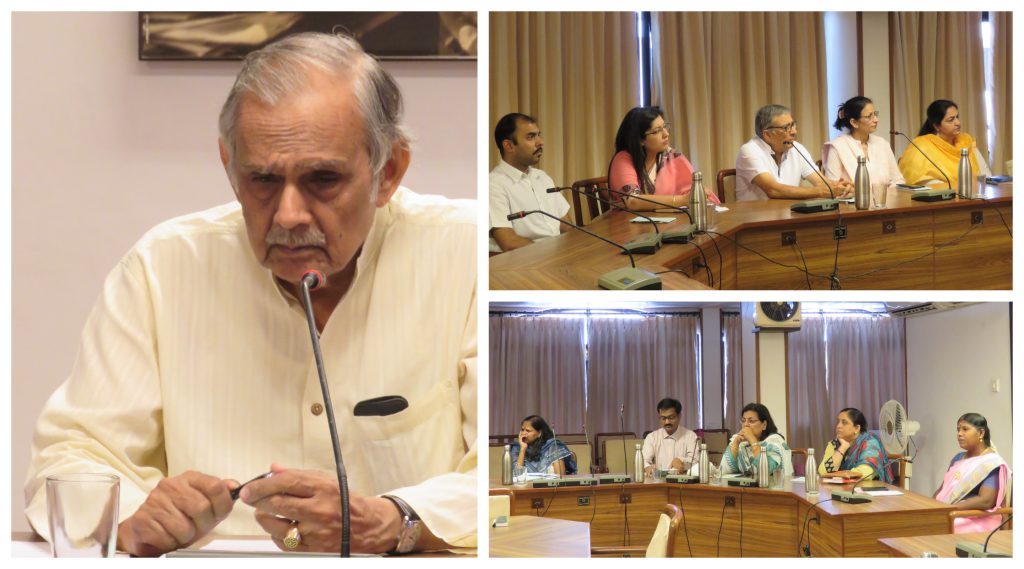
Dr. Sampadananda Mishra then gave a brief overview of the two-day agenda for discussions. He briefly spoke about some of the key projects taken up by SAFIC in the areas of Sanskrit teaching and learning, with a particular focus on Devabhasha curriculum for classes LKG to VIII. He informed that this curriculum is already successfully implemented in several schools across the country, including the Sri Aurobindo Centre of New Education, Jodhpur where it went into effect two years ago.
He then invited Dr. Beloo Mehra to give a summary and rationale behind the 2-day orientation course that has been designed by SAFIC to give a brief introduction to students from classes IX-XII. Dr. Pranjal Garg briefly spoke about how with his research in archaeology and Harappan studies he can contribute toward a study programme that is designed for students of Auro Schools.
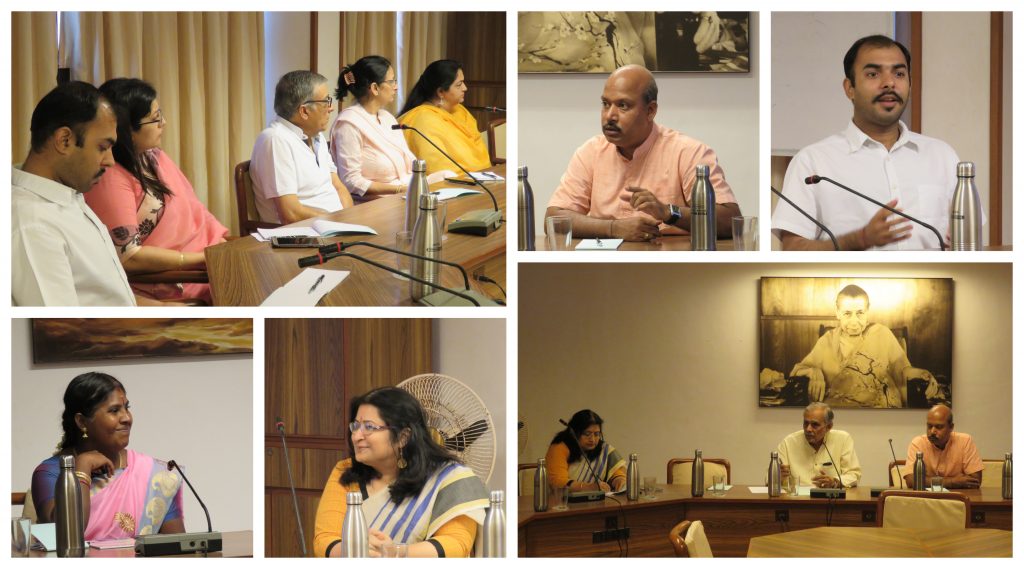
After the tea break, Dr. Mishra invited the Auro school representatives to share some of the Indian culture related learning activities that are already happening in their schools and also talk about some major gaps in this area that they feel need to be addressed. They were also asked to share any possible concerns they could foresee in implementing mandatory Sanskrit language learning in their schools. Some concerns about parents’ questions regarding the relevance of Sanskrit learning for our times and for students’ intellectual and overall personality development were brought up.
Dr. Mishra outlined some possible answers which can be shared with the parents and teachers. These answers included specific facts and figures as well as findings from recent researches about the “Sanskrit effect” on cognitive development. He also informed the group how these concerns were addressed at Jaipuria school in Lucknow which was the first school to implement Devabhasa curriculum about 15 years ago. He shared how the curriculum has been refined, slowly over time, with a lot of feedback and research from teachers and students, and the positive impact that the curriculum has had on the students’ overall development as seen by the recent reports and feedback at Jaipuria. It was agreed that before implementing a full-fledged curriculum like Devabhasha, some detailed meetings with parents’ groups and school teachers must take place.
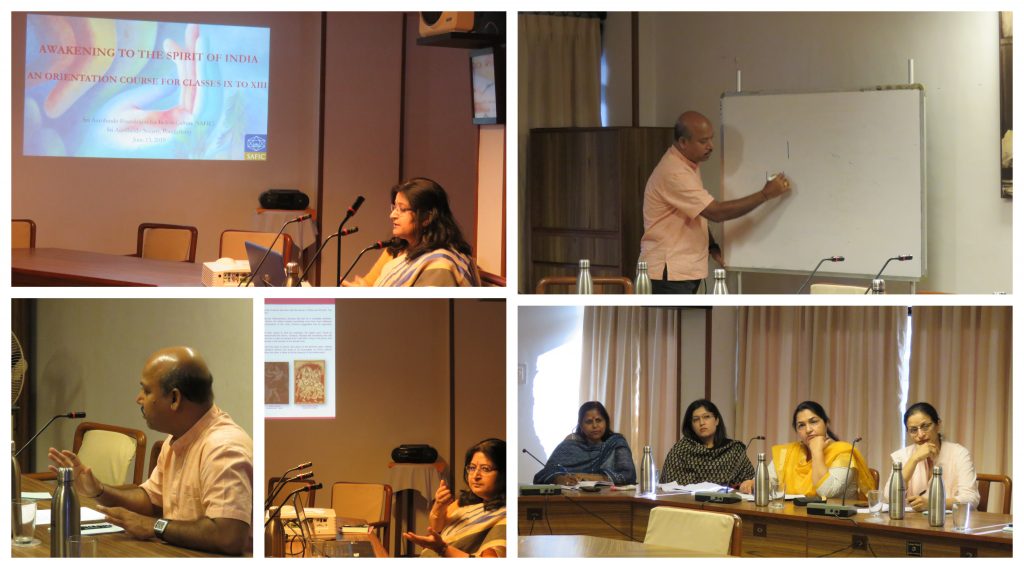
After lunch, Dr. Mehra gave an overview of the two-day orientation course titled “Awakening to the Spirit of India” which has been designed for students from classes IX-XII. She explained that this course is meant to introduce the cultural heritage of India to awaken the youth of India to the true sense of Indianness or to the spirit of India, and also to make India’s past cultural heritage relevant for today and tomorrow.
The course will have several hour-long sessions covering different aspects of ancient Indian cultural heritage – art, science, technology, history, music, dance, theatre, literature. Interesting materials in these areas will be shared with the students through creative presentations, experiential activities, quizzes, discussions, films etc. Emphasis will be given on connecting the past with the present so that students can see the continuity of Indian knowledge systems and civilisational heritage. Some independent assignments and/or small group project work will also be part of the course. Sufficient time will be allotted for assimilation and reflection sessions.
Dr. Mehra also showed a few samples of creative materials that have been prepared by SAFIC to introduce selected aspects of Indian culture to younger audiences, for example, on Indian dance and music. This was followed by an open discussion about the possibilities of conducting such an orientation course, and the future course of action following this orientation. Organising exhibitions on selected themes related to India and Indian culture was also discussed. A question was raised about how learning about Indian culture can be made ‘cool’ for the adolescents and youth.
After the evening tea, more discussions followed about the logistics in implementation of the orientation course as well as the Devabhasha curriculum. The representatives from the Jodhpur school also shared some video clips of some of the Sanskrit activities and programmes that were recently organised there as part of the Devabhasha curriculum. Representatives from other schools appreciated this sharing as they could see the impact of this programme.
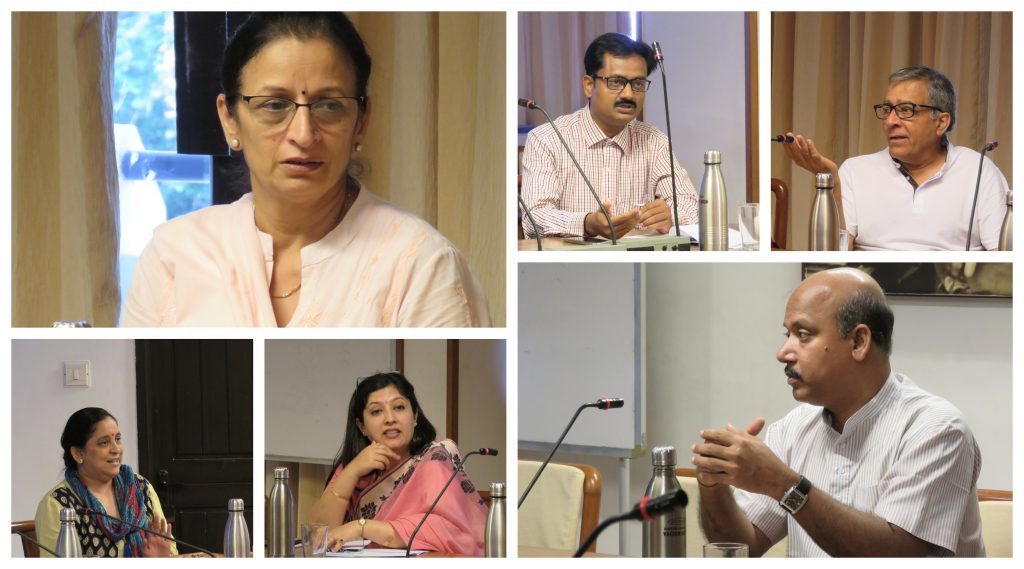
Day 2
Day 2 discussions beganwith addressing specific curricular challenges in Auro Schools, especially with regard to bringing Sanskrit and Indian culture into the existing curriculum. Specific concerns such as working around the logistics of Punjabi language learning in schools at Patiala and Chandigarh were also discussed.
After tea-break, Dr. Garg gave a brief sample demonstration of a possible 1-hour module on Indian Art. His presentation included several pictures covering ancient Indian architecture, sculpture, and its evolution over time. He also spoke about how a brief comparison with some of the finer examples of Western artistic heritage can be helpful for the students.
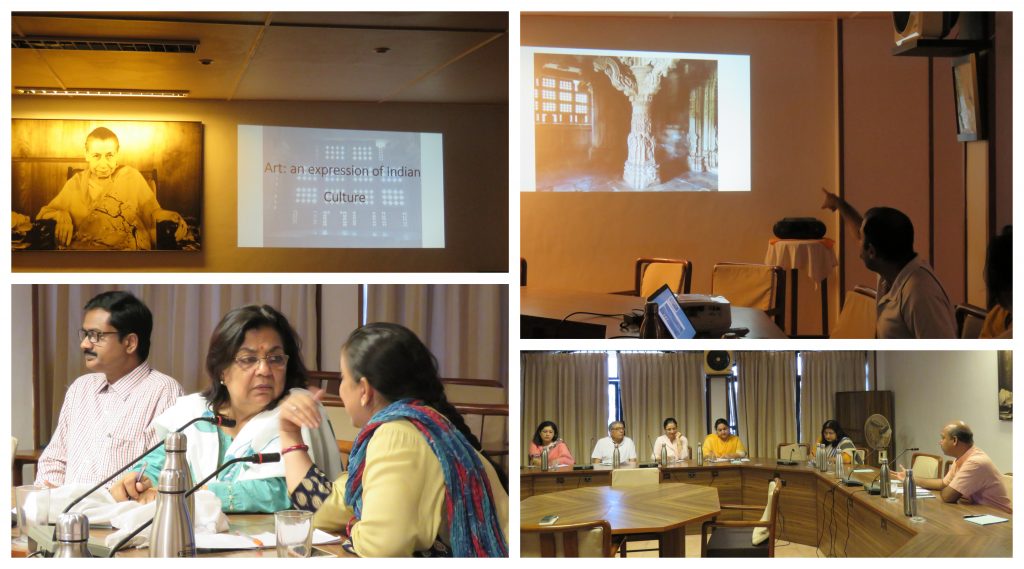
This was followed by Dr. Mehra sharing examples of how films can be used to bring in some of the inner values emphasised by Indian culture. She added that this could be one way to make learning about Indian culture ‘cool’ for the children and adolescents. It was discussed how film can be used as a powerful learning medium, especially since the younger generation today is so tuned with media, technology, and movies. Specific learning activities based on films could be designed, Dr. Mehra said.
During the intense discussions which followed, another important question was brought up about addressing the accusation that is thrown at Indian culture – about it being patriarchal. It was discussed that mass media and social media these days often end up creating such distorted pictures of Indian culture in the minds of the younger generation. And it is important to address this concern in schools, for which teachers need to be exposed to varied kinds of literature and stories which can help them address such issues brought in by the students in class discussions. Some resources were shared with the group in this regard.
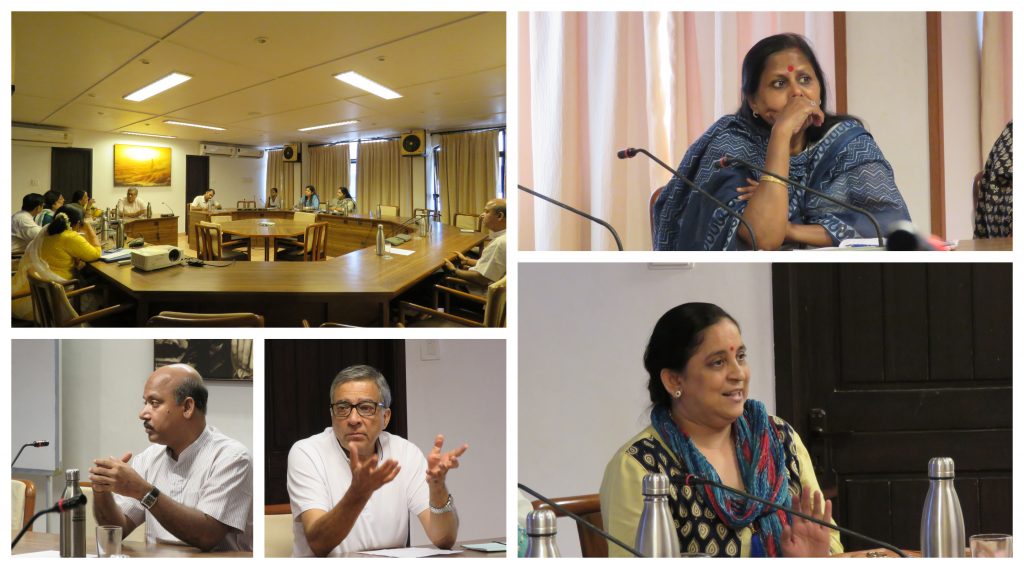
After lunch, there were two other rounds of discussions regarding the logistics in implementing some of the ideas and programmes that had been presented. Various practical concerns and possibilities were addressed. It was discussed that in order to move further it was important to have some type of an action plan.
After discussing different possibilities at different schools, given their calendars and other curricular constraints, it was decided that each school will send an individualised action plan by July 15 to the office of Shri Pradeep Narang. This will then help SAFIC come up with individualised programmes starting with next year – ranging from helping schools organise exhibitions, conducting shorter orientation programmes on Indian Culture (for students, teachers, parents), training school teachers who could then conduct such orientation programmes on a regular basis, to long-term implementation such as that of Devabhasha curriculum, which also includes helping schools hire and training Sanskrit teachers.
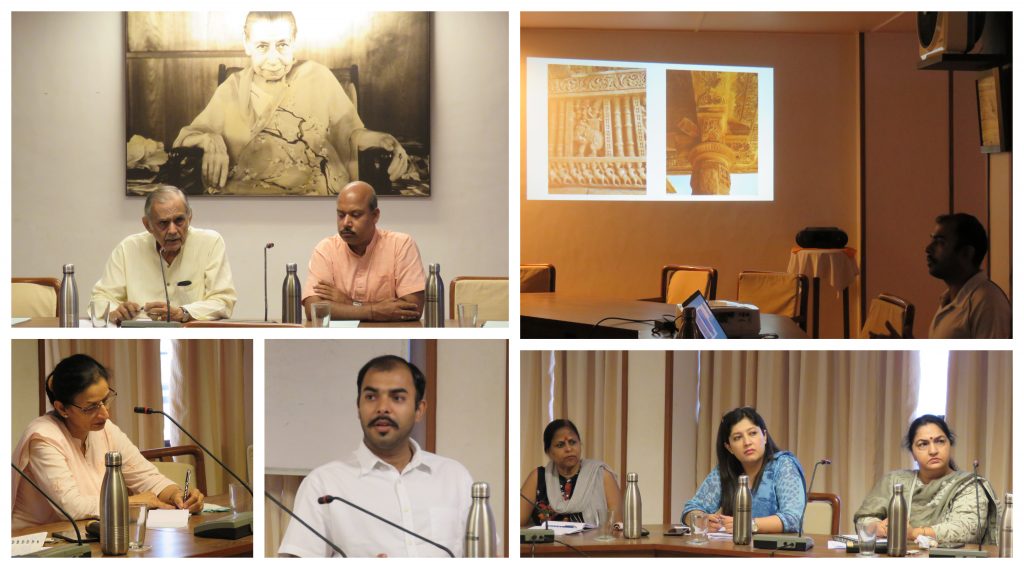
Overall, the discussions were fruitful and SAFIC team looks forward to the action plans submitted by the various Auro Schools so that further planning can take place.
Report by SAFIC
